The CSMI will maintain the quality of irrigation water by keeping stormwater out of irrigation canals.
Generally, stormwater runoff within the CSMI region naturally flows towards the irrigation distribution system. The irrigation system includes the Western Headworks (WH) canal owned by AEP that feeds into Chestermere Lake, and the main canals and reservoirs of the WID. Even stormwater that doesn’t drain into the canals and is collected in ponds can end up in the irrigation system when emergency pumping moves water from onsite stormwater storage ponds into irrigation canals. Emergency pumping is often necessary when extremely high volumes of water accumulate in these ponds, posing a risk to surrounding areas. This strategy is known as “zero-release,” where stormwater is dealt with on site except in emergency pumping situations.
As runoff flows across the land, the water quality deteriorates as sediment, heavy metals, hydrocarbons, pesticides, and other pollutants accumulate. Stormwater can also contain nutrients, especially if running over agricultural land with fertilizer application, which can impact water quality. The current system, in which stormwater ends up in the irrigation canals whether by overland runoff or emergency pumping, has numerous challenges for water quality and irrigation system maintenance, such as:
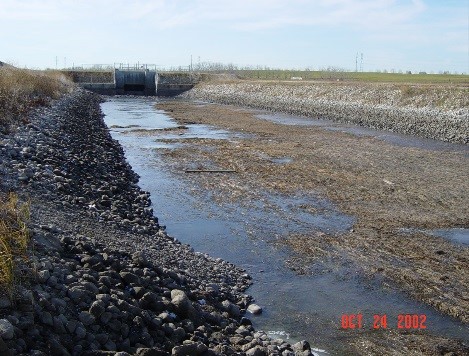
The Municipalities, AEP, and WID currently follow a set of procedures laid out in the legally binding “Western Headworks Stormwater Management Agreement” for mitigating impacts of emergency pumping. A request to discharge stormwater into the Western Headworks (WH) Canal requires an in-depth assessment of risk and liability, with respect to water quality issues within Chestermere Lake and downstream into the WID system. Despite these management practices, stormwater discharge into the WH Canal creates management issues and challenges for the committee that oversees implementation of the Western Headworks Agreement, as well as environmental impacts to water quality and quantity.
The regional CSMI System will provide an outfall for many of the areas that currently request emergency pumping into the WH and WID Canals. CSMI would reduce emergency pumping and keep stormwater out of irrigation canals and Chestermere Lake, providing significant improvement to the water management issues on the WH Canal, for users of Chestermere Lake and the WID.
CSMI will largely eliminate stormwater contamination of high quality irrigation water flowing through the WID canals. Regional wetlands that are constructed as part of the CSMI system and implementation of Best Management Practices will enhance the quality of stormwater before it enters natural outlets, protecting aquatic ecosystems from negative stormwater impacts to water quality.
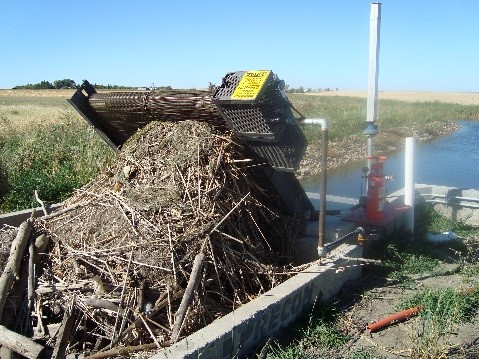
The CSMI will reduce the risk of localized flooding by providing an effective stormwater management system.
Many areas within the CSMI region have undergone residential and industrial development but have drainage patterns with no natural outlet for stormwater runoff. During heavy precipitation and flooding events, areas such as Janet, Langdon, and Wheatland Industrial have experienced substantial, localized flooding that is costly to municipalities and damaging to downstream infrastructure. Current practice on many of these recent subdivisions is to evaporate water that collects on the land, but emergency pumping is also necessary when extremely high volumes of water accumulate, and private property is at risk of flood damage. This strategy is known as “zero-release,” where stormwater is dealt with on site except in emergency pumping situations.
Recent experience shows that “zero-release” models are inadequate, due to outdated design standards and the anticipated impacts of climate change. At full build out, the CSMI System will provide “continuous release” for stormwater on developed land in the CSMI region, eliminating the need for storing stormwater onsite as well as emergency pumping. In a continuous release scenario, stormwater is fed directly to the CSMI system, even during heavy rainfall or flooding events. Ponds on developed sites can also then provide buffering capacity, because their levels can be controlled using the CSMI system as an outlet throughout the season.
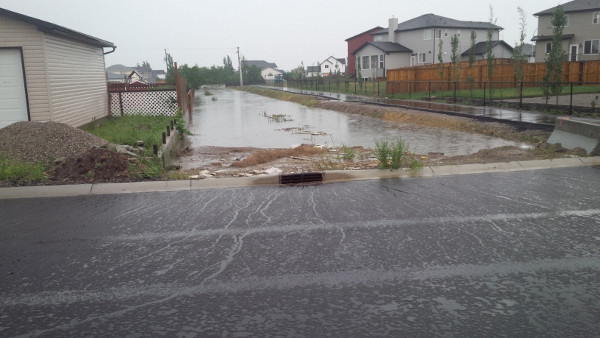
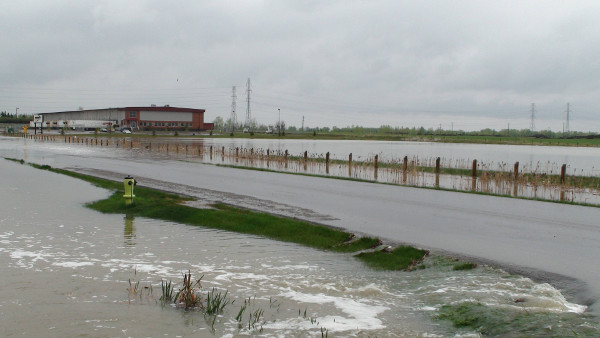
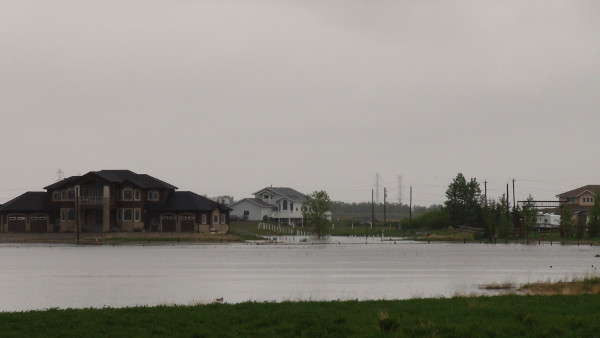
The CSMI will facilitate new development in the area by providing an outlet for stormwater.
The CSMI infrastructure has been planned to facilitate anticipated new development in the region over the next 25 years. The CSMI Infrastructure will service an area that is projected to see population growth as well as growth of industrial and commercial development. Current, ‘zero-release’ stormwater strategies that developers must implement are inadequate, costly, and implemented on a case-by-case basis. A regional solution will provide an adequate and ready-made stormwater outfall for developers in the area, reducing risk of costly emergency pumping and ‘zero-release’ infrastructure that must be built on a case by case basis.
Many of the partners have recently completed Master Drainage Plans for development areas within the CSMI region to further define the existing constraints and develop long-term sustainable plans. However, each Master Drainage Plan also relies on the development of a regional system to ultimately provide an outfall.
The CSMI will provide a regional stormwater solution that reduces ongoing risks and liabilities to partner municipalities, such as costly emergency stormwater discharge and damage from localized flooding.
Without a regional solution in place, municipalities and the WID will continue to face ongoing risks and liabilities. Several examples of how the CSMI will mitigate these risks and liabilities are below:
The CSMI is an opportunity for municipalities and the irrigation district to establish and maintain a long-term partnership that benefits all partners equally.
The CSMI is an opportunity for municipalities and the irrigation district to establish and maintain a long-term partnership that benefits all partners equally
We provide Canadian educational resources on water practices to promote conservation and sustainability. Our team crafts current and relevant content, while encouraging feedback and engagement.
The Canada WaterPortal is a registered charity, #807121876RR0001
We recognize and respect the sovereignty of the Indigenous Peoples and communities on whose land our work takes place.
© 2025 All Rights Reserved.